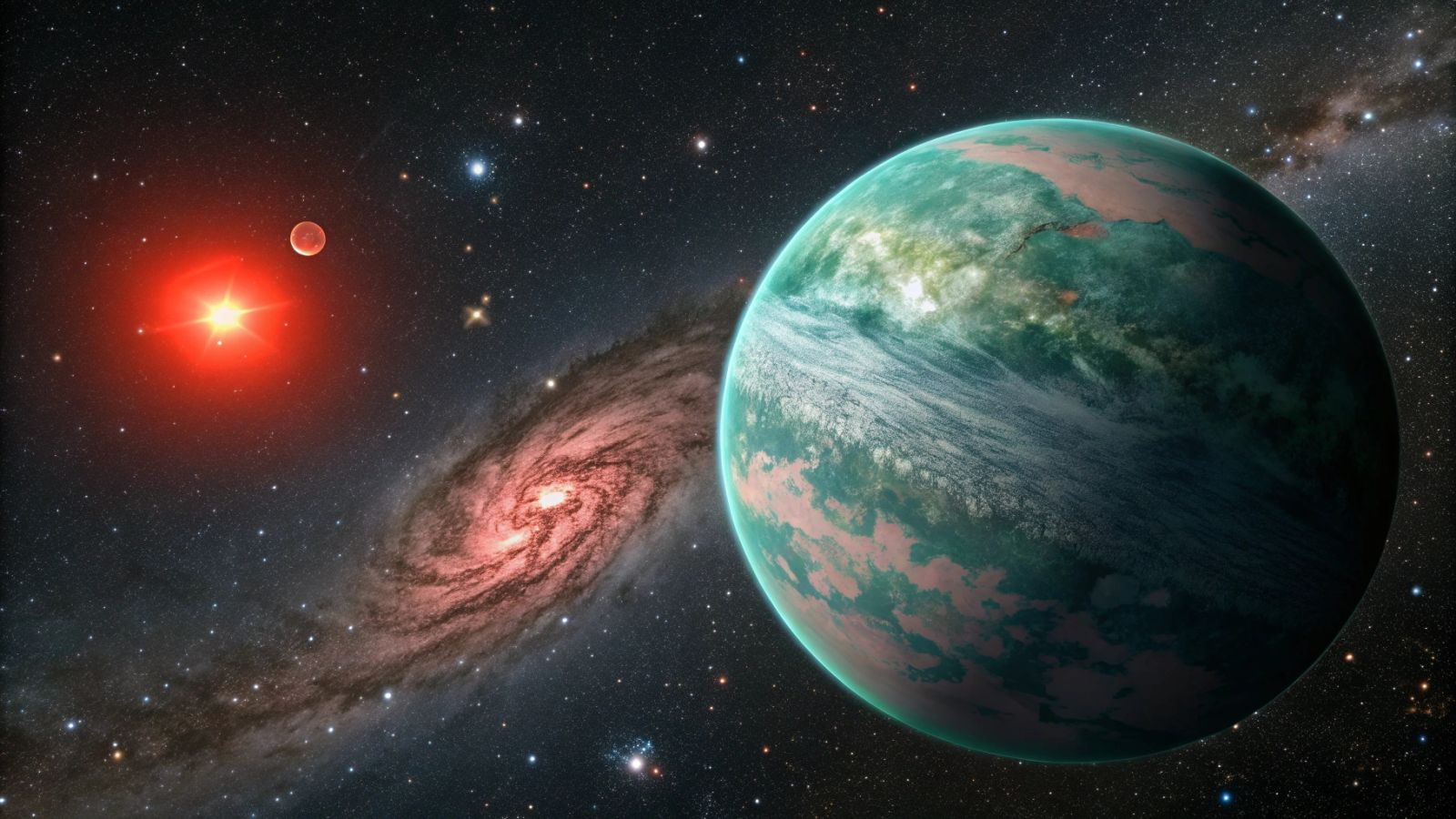This new method could identify unexpected extraterrestrial life 👽
Published by Cédric,
Article author: Cédric DEPOND
Source: The Astrophysical Journal Letters
Other Languages: FR, DE, ES, PT
Article author: Cédric DEPOND
Source: The Astrophysical Journal Letters
Other Languages: FR, DE, ES, PT
Follow us on Google News (click on ☆)
A recent study published in Astrophysical Journal Letters proposes an unprecedented method for detecting life beyond our Solar System. It focuses on gases called methyl halides, which could reveal the existence of microbial life forms on so-called "hycean" planets—ocean worlds with a hydrogen-rich atmosphere.

Ocean worlds as priority targets
Direct observation of Earth-like planets proves challenging with current technology. Their small size and low brightness make atmospheric analysis difficult. The James Webb Space Telescope (JWST) is therefore turning its attention to more massive exoplanets orbiting red dwarf stars. These stars, smaller and cooler than our Sun, are abundant in the galaxy.
Hycean worlds, though uninhabitable for humans, could harbor microorganisms. Indeed, their oceans, shielded by a dense hydrogen-rich atmosphere, would create an environment suitable for anaerobic life. The search for specific biosignatures, such as methyl halides, thus becomes compelling.
Methyl halides, produced on Earth by bacteria, algae, and fungi, could accumulate in detectable quantities on these planets. Their presence, combined with other clues, would strengthen the likelihood of extraterrestrial life. The JWST, with its ability to analyze exoplanetary atmospheres, offers a unique opportunity to explore these ocean worlds.
A promising chemical signature
The presence of these gases, even in low concentrations on Earth, could be significant on hycean planets. Their accumulation, due to specific atmospheric conditions, would make their detection possible light-years away. Methyl halides, such as methyl chloride or methyl bromide, have chemical properties that make them detectable via infrared spectroscopy. This technique, used by the JWST, allows scientists to identify molecules in an exoplanet's atmosphere by analyzing the light passing through it.
The JWST, with its ability to analyze exoplanetary atmospheres, offers a unique opportunity to explore these ocean worlds. Scientists estimate that detecting these gases, combined with other clues like the presence of liquid water and temperatures compatible with life, would significantly increase the probability of detecting extraterrestrial life. Moreover, detecting these gases is faster and less expensive than detecting oxygen or methane, making this approach particularly attractive.
Researchers at the University of California, Riverside are expanding their study to other types of planets and gases. They are examining extreme terrestrial environments, such as the Salton Sea, to better understand the processes producing these molecules. The discovery of methyl halides on multiple exoplanets would suggest a widespread distribution of microbial life in the Universe. Thus, the search for this type of specific biosignature becomes crucial in determining whether we are alone in the Universe.
Going further: How does JWST detect biosignatures?
The James Webb Space Telescope uses infrared spectroscopy to analyze the composition of exoplanetary atmospheres. By measuring the light passing through a planet's atmosphere, it can identify the gases present. Each gas absorbs light at specific wavelengths, creating unique signatures.
Methyl halides, for example, strongly absorb infrared light. This property makes them easier to detect with the JWST. Comparing the obtained spectra with atmospheric models allows scientists to determine the concentration of these gases and search for signs of life.